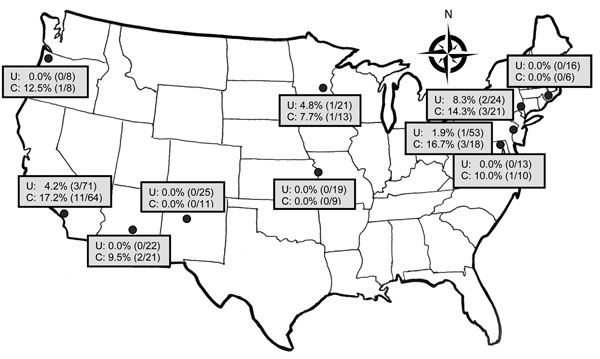Volume 22, Number 9—September 2016
CME ACTIVITY - Research
Fluoroquinolone-Resistant and Extended-Spectrum β-Lactamase–Producing Escherichia coli Infections in Patients with Pyelonephritis, United States1
Figure 2

Figure 2. Prevalence of extended-spectrum β-lactamase–producing Escherichia coli infection among patients with uncomplicated (U) and complicated (C) pyelonephritis, by study site, United States, July 2013–December 2014. Study sites are listed in the Technical Appendix; Technical Appendix Tables 2 and 3 provide additional results on antimicrobial resistance rates.
1Preliminary results of this research were presented at the 2014 IDWeek Meeting, Philadelphia, PA, USA, October 8–12, 2014.
Page created: August 11, 2016
Page updated: August 11, 2016
Page reviewed: August 11, 2016
The conclusions, findings, and opinions expressed by authors contributing to this journal do not necessarily reflect the official position of the U.S. Department of Health and Human Services, the Public Health Service, the Centers for Disease Control and Prevention, or the authors' affiliated institutions. Use of trade names is for identification only and does not imply endorsement by any of the groups named above.